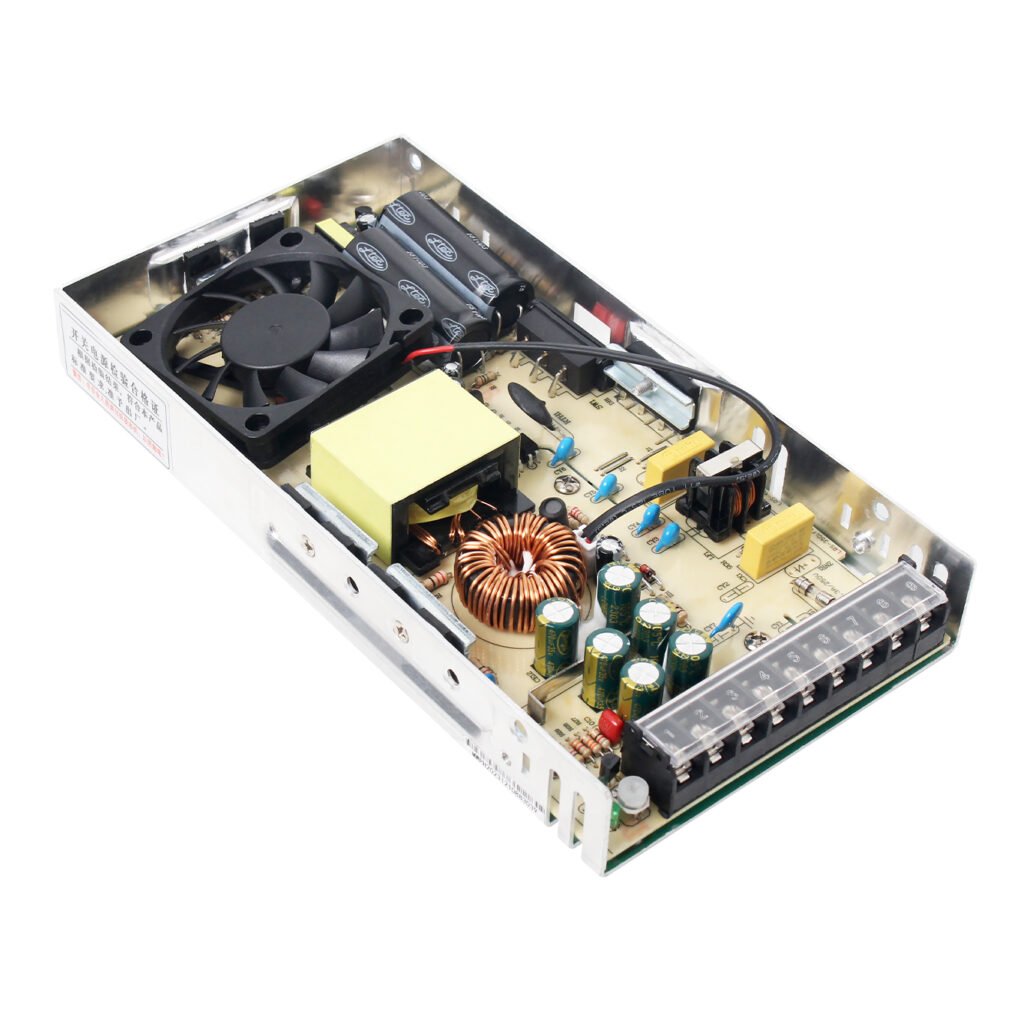
Key Components and Functions:
- Transformer:
- Function: Reduces the input AC voltage (e.g., 220V or 110V) to a lower voltage suitable for subsequent circuit processing.
- Selection: Choose a transformer based on the input voltage and desired output voltage.
- Rectifier Circuit:
- Function: Converts the AC voltage output from the transformer into a pulsating DC voltage.
- Common Type: Single-phase bridge rectifier circuit, consisting of four diodes, which effectively utilizes both positive and negative halves of the input voltage.
- Filter Circuit:
- Function: Removes AC components from the pulsating DC voltage output by the rectifier circuit, resulting in a smoother DC voltage.
- Common Component: Electrolytic capacitor, which is large in capacity and low in cost, making it suitable for filtering purposes.
- Voltage Regulator Circuit:
- Function: Stabilizes the DC voltage output from the filter circuit at 5V, compensating for input voltage fluctuations and load changes.
- Common Types:
- Linear Regulator: Such as the 7805 series, known for simplicity, reliability, and low cost but with lower efficiency and higher heat dissipation.
- Switching Regulator: Offers higher efficiency, smaller size, and lighter weight but requires a more complex design and higher cost.
Circuit Diagram Overview (with Linear Regulator as an Example):
- Input: Connect to mains power (e.g., 220V AC), passing through a fuse and power switch before reaching the transformer.
- Transformer: Steps down the mains voltage to a suitable voltage for the rectifier circuit (e.g., 9V AC).
- Rectifier Circuit: Converts the AC voltage into a pulsating DC voltage using a single-phase bridge rectifier made up of four diodes.
- Filter Circuit: Smoothes the pulsating DC voltage using electrolytic capacitors.
- Voltage Regulator Circuit: Utilizes a 7805 linear regulator to stabilize the filtered DC voltage at 5V.
- Output: Provides a stable 5V DC voltage to power the load.
Precautions:
- Safety: When handling mains power and high-voltage circuits, follow safety procedures strictly to avoid electric shock and short circuits.
- Heat Dissipation: Linear regulators generate heat during operation, requiring adequate cooling, possibly with heat sinks or fans.
- Stability: Consider the impact of input voltage fluctuations and load changes on output voltage stability, implementing compensation and stabilization measures as needed.
Conclusion:
Designing a 5V DC power supply circuit involves selecting appropriate components and following key steps, including transformer selection, rectifier circuit design, filter circuit design, and voltage regulator circuit design. Balancing performance, cost, safety, and stability is crucial to ensure a reliable final product.
